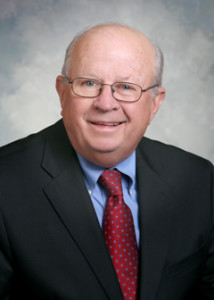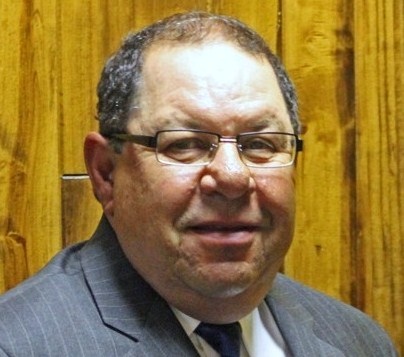New Mexico, reeling from the hard knocks of 2014-2016, takes stock of its current O&G industry and awaits—and readies for—the politics yet to unfold.
by Tony Burke
The Permian Basin is large. It stretches approximately 200 miles wide and 300 miles longitudinally. The basin rests, substantially, beneath two states. The grand industry that has sprung forth from the Permian has come to be equally pivotal for both New Mexico and Texas. We all know what oil means to Texas, but is the story any different in New Mexico?
“There are not really fundamental differences between oil and gas operations between the New Mexico and Texas sides of the Permian,” said Stephen Robertson, executive vice president of the Permian Basin Petroleum Association.
According to Robertson, oil and gas operations can differ widely based on geography. The Permian features diverse geological conditions, even within single counties. What does not change, however, is the nature of the oil and gas business, even crossing from the Lone Star State into the Land of Enchantment.
“Right now everyone is in the same boat,” said Robertson.
New Mexico’s northwest (San Juan county) and southeast corners (Eddy and Lea counties) are the dominant oil and gas-producing parts of the state. The number of counties may be small, but that number is hardly representative of the impact of the oil and gas production of those counties.
“In these parts of the state, oil is definitely king,” said Don Tripp, speaker of New Mexico’s House of Representatives. That should sound familiar, especially to Midlanders and Odessans.
The regulatory climates of these two Permian constituents are another story.
“The regulations in New Mexico are far more onerous than they are in Texas. The regulations across the Texas border are much more business friendly and industry friendly. I’d like to figure out how bring that over here,” said Tripp.
“Federal government overreach and regulation is really the main issue in both New Mexico and Texas,” said Robertson. “The presence of public lands in New Mexico makes these government actions even more important to operations in the state. The biggest threats facing oil and gas operations in New Mexico have to do with regulations on these public lands.”
In a severe downturn, which the industry and its producers currently face, an unfavorable legislature can turn a crippling situation even direr. As it turns out, the current state of the industry has played just as large a role in New Mexico as it has in Texas.
“If you rely on the oil and gas industry for your livelihood, regardless of what part of the Permian you live in, you are hurting right now. To be an oilman, however, means you are inherently optimistic, and I’d say that fact still holds true today,” said Robertson.
“Overall, [producers are] optimistic that it will be back. In the short term, they say ‘expect lower prices for the next year, year-and-a-half,’” said Tripp.
“There are some economic problems if you don’t have drilling all the time,” Tripp continued. “We were doing all right with lower prices, but now production has tailed off and we’re hurting. It’s really hard on the economy. Farmington [of San Juan County] has gone through a decline in price, too.”
According to Mike Miller, New Mexico’s government affairs representative for the PBPA, “About 33-to-35 percent of New Mexico’s general fund budget comes from oil and gas revenues. With prices down, and trying to figure out what’s going to happen with oil, it’s made setting a budget difficult.”
“There wasn’t a lot of money [for the state legislature session in February],” Miller added. In this type of climate, “it’s easier to say no, than to say yes. Things have come almost to a screeching halt.”
“People are people,” Miller added. “From a community standpoint, city officials are paring down budgets… I would say very cautious attitudes. They want to hide and watch.”
“The attitudes among the producers, many of them have been through four or five big swings in the market. This is probably one of the more severe swings,” said Tripp. “[For] some of the older companies, they say they’ve seen it before and will see it again.”
For the first time in 62 years, New Mexico’s House is under Republican control, a 37-33 split. The Senate makeup is 24-18 in favor of the Democrats. With both the House and Senate up for election this fall, not to mention a potential shakeup in Washington, D.C., there is quite a lot at stake in New Mexico’s political scene.
“It’s going to be an interesting watch,” said Miller.
“[New Mexico operations and the Presidential election] are very much hand in hand,” said Tripp. “A bad turnout on our side could really hurt us. We won’t have a lot of federal money coming in to help our locals.”
“I think the lines are pretty well drawn and it will be a contentious election,” he said. We’re all poised with bated breath to see what happens with the national election. That turnout could alter the outcome significantly.”
“We’ve had some onerous rules, and some operators who didn’t want to deal with those rules just left,” said Miller. “We’ve had different administrative rules that have made it difficult to operate here. Some of them have been rectified. That’s what we [the PBPA] do.”
“If the legislature is more conservative, we’ll be able to move forward. If it goes the other way, then we’ll most likely be on the defensive,” he added. “What happens now, is our legislature will start interim committee meetings. We’ll track Radioactive and Hazardous Materials, Water and Natural Resources, Revenue Stabilization and Tax Policy, and Legislative Finance Committee. We stay on top of those committees because they give us an idea of what might be upcoming.”
Speaker Tripp is also active on the committee front, co-chairing the Jobs Council and Legislative Council.
“I think we have a lot of liberal members of the legislature who get revved up by frac’ing, and their concerns are not scientifically based,” said Tripp.
“They want ordinances against drilling. On the other side of the coin, they’re hollering about not having enough funds. It’s a catch-22,” Tripp continued. “They don’t all realize the importance of drilling, and oil and gas. I get frustrated about people benefiting form the money from oil and gas and then all they want to do is shut down the industry.”
“Cities and counties cannot just on a whim ban the industry from operating [in those places]. [We are] working with those counties to give them peace of mind, but also to educate them about what the industry is [really doing],” said Miller.
“It’s a lot of little details that come together to get things moving. It’s primarily seeing what we can do to help the process,” said Tripp.
Though political situations are ever-changing, there may be reason to believe that the importance of oil and gas is not entirely lost on one side of the aisle after all.
“Operations from the Permian Basin in New Mexico are not just vital to those bringing the hydrocarbons out of the ground,” said Robertson. “The oil and gas industry of Southeast New Mexico provides needed revenues for the State of New Mexico, the U.S. federal government, and most importantly the schools, hospitals, and infrastructure of the communities of Southeast New Mexico.”
“I think those in government, and in elected office in particular, in New Mexico greatly understand the importance of a healthy oil and gas industry for the prosperity of the state and its people,” Robertson continued.
“The PBPA recently submitted official comments on the BLM’s proposed rules on Waste Prevention, Production Subject to Royalties, and Resource Conservation,” he added. “Giving written comments, however, is often not enough. The PBPA and its members are active in addressing these concerns with not only the staff of the BLM, but with elected officials at the local, state, and federal levels.”
“We’re doing everything we can. We feel good about it,” said Tripp. “It will be a lot of work and will take all hands on deck.”
Now, about that downturn…
Tony Burke is a freelance writer and the assistant editor of PBOG. He can be reached at tburke@zacpubs.com.











